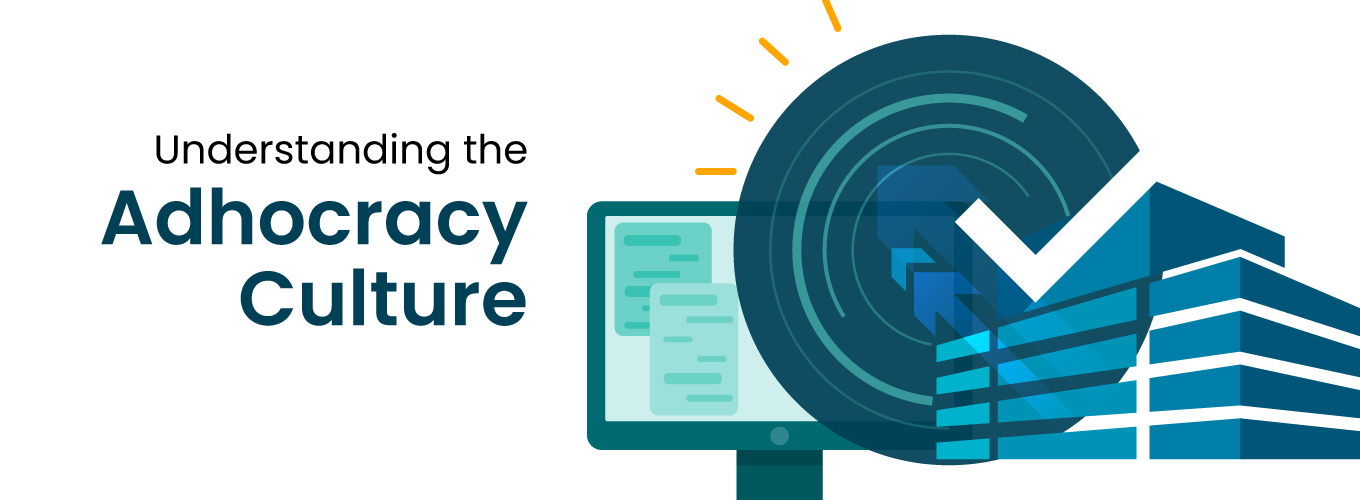Understanding the Adhocracy Culture
What defines a company’s culture?
A company’s culture or work culture can be defined as the shared values, attitudes and practices that characterize an organization. It’s the personality of a company and it plays a large part in the employees’ overall job satisfaction.
A common misconception is that core values, employee perks are the only cornerstones of strong company culture. The core values should manoeuvre the company culture but are by no means the only guiding forces. The benefits that are offered to the employee and the nature of the benefits are a very important part of what gets defined as ‘culture’. Building a winning company culture takes a lot of time and effort. The corporate culture must accurately reflect values and align with the overall mission of an organization.
In the report of a recent study conducted by Glassdoor, 77% of adults evaluate a company’s culture before applying to an open position and 56% rank an organization’s company culture as more important than compensation.
Adhocracy: A new paradigm spearheaded by big-tech companies
Originating from Latin, ‘Ad-hoc’ translates as ‘to this’. In the workplace, the term ‘adhocracy’ denotes a fast-paced and ever-changing set-up, where an organization is both adaptive to issues and reactive with solutions.
The primary focus of adhocracy culture is to take risks and innovate, or to have the urge to innovate. Adhocracy culture companies are well established and deeply rooted in innovation. The top companies define the qualities of adhocracy culture into flexibility and discretion; external focus and differentiation. The motto, dramatically put, is to risk it ‘to get the biscuits’.
These top companies (google, apple) are the organizations that are at the forefront of their industry and they’re continually hoping to foster enormous advancement before any other person has even begun posing the right questions. To do as such, they need to face challenges. Adhocracy culture esteems uniqueness and employees are urged to think innovatively and bring ideas to their table. Since this sort of organizational culture falls within the external focus and differentiation category, novel thoughts should be attached to market growth and company success.
Adhocracy culture describes an organisation that runs by the seat-of-its-pants. Reactive and welcoming to change, leaders encourage teams to turn projects and goals on their heads when necessary and at lightning speed.
Navigating the flexible working environment
The only question that ad hoc culture asks is ‘What can we do that others can’t do or aren’t doing?’
We are now living in a millennial working world and the ad hoc culture fits perfectly with the generation’s mindset. Surprisingly, the majority of employers now believe that work doesn’t have to fit into 9 to 5 and isn’t limited to the desk in a busy office full of distractions. A lot of workers also believe that strategies can change dynamically.
This adhocracy culture is driven by an adversity to the status quo and an affinity to change. So, it naturally lends itself to flexible, remote and dynamic working patterns. This is great for those who put a huge emphasis on living a life with a lot of activities and pursuits outside of work. The adhocracy culture aims high and frequently achieves those heights, both in terms of profit margins and employee engagement. The cultural model rewards confidence and creativity. The door is always open for people with bright ideas, whatever their position in the company. It’s an environment that supports the individual’s professional progression where the quality of what you bring as an individual to each project counts the most. Like a clan culture, adhocracy offers excellent flexibility but adopts an outwards focus with a keen eye on the future.
How can an organisation adapt to adhocracy?
It depends on that particular industry. It may be hard to develop an authentic adhocracy that includes a high-risk business strategy. However, implementing strategy and brainstorming sessions provides employees with the opportunity to share big ideas that can help to propel the company further. The risk factor here is, there’s constantly a possibility that a new venture won’t pan out and may even damage the business.
From top companies to start-ups to hospital emergency rooms following ad hoc culture. The reasons might differ for every organization. Their cultures also might change over time. But it is very usual for startup employees to carry out tasks that aren’t part of their job descriptions because their goal is to get things done as quickly as possible, not worry about overstepping internal professional boundaries. To conclude, adhocracy is all about efficiently employing ‘chaotic energy’ in environments and situations that demand divergent thought and action.










